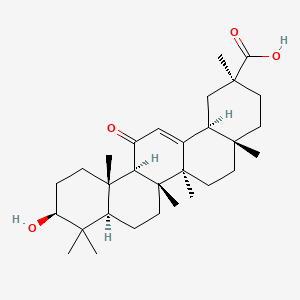| Authors | Title | Published | Journal | PubMed Link |
|---|---|---|---|---|
| Fujino H and Regan JW | Prostaglandin F2alpha amplifies tumor necrosis factor-alpha promoter activity by the FPB prostanoid receptor. | 2004 | Biochem. Biophys. Res. Commun. | pmid:15094384 |
| Seul KH et al. | Adenoviral delivery of human connexin37 induces endothelial cell death through apoptosis. | 2004 | Biochem. Biophys. Res. Commun. | pmid:15194487 |
| Guillotin B et al. | Human primary endothelial cells stimulate human osteoprogenitor cell differentiation. | 2004 | Cell. Physiol. Biochem. | pmid:15319536 |
| Gumpricht E et al. | Licorice compounds glycyrrhizin and 18beta-glycyrrhetinic acid are potent modulators of bile acid-induced cytotoxicity in rat hepatocytes. | 2005 | J. Biol. Chem. | pmid:15642733 |
| RodrÃguez-Sinovas A et al. | Protective effect of gap junction uncouplers given during hypoxia against reoxygenation injury in isolated rat hearts. | 2006 | Am. J. Physiol. Heart Circ. Physiol. | pmid:16183732 |
| Garg S et al. | Staphylococcus aureus-derived peptidoglycan induces Cx43 expression and functional gap junction intercellular communication in microglia. | 2005 | J. Neurochem. | pmid:16190870 |
| Shamekh R et al. | The role of connexins in the differentiation of NT2 cells in Sertoli-NT2 cell tissue constructs grown in the rotating wall bioreactor. | 2006 | Exp Brain Res | pmid:16328273 |
| Perez Velazquez JL et al. | Role of gap junctional coupling in astrocytic networks in the determination of global ischaemia-induced oxidative stress and hippocampal damage. | 2006 | Eur. J. Neurosci. | pmid:16420410 |
| Luna VM and Brehm P | An electrically coupled network of skeletal muscle in zebrafish distributes synaptic current. | 2006 | J. Gen. Physiol. | pmid:16801383 |
| Miyazato M et al. | A gap junction blocker inhibits isolated whole bladder activity in normal rats and rats with partial bladder outlet obstruction. | 2006 | Biomed. Res. | pmid:17099284 |
18alpha-glycyrrhetinic acid
18alpha-glycyrrhetinic acid is a lipid of Prenol Lipids (PR) class. 18alpha-glycyrrhetinic acid is associated with abnormalities such as Wiskott-Aldrich Syndrome. The involved functions are known as inhibitors, salivary gland development and branching morphogenesis.
Cross Reference
Introduction
To understand associated biological information of 18alpha-glycyrrhetinic acid, we collected biological information of abnormalities, associated pathways, cellular/molecular locations, biological functions, related genes/proteins, lipids and common seen animal/experimental models with organized paragraphs from literatures.
What diseases are associated with 18alpha-glycyrrhetinic acid?
18alpha-glycyrrhetinic acid is suspected in and other diseases in descending order of the highest number of associated sentences.
Related references are mostly published in these journals:
| Disease | Cross reference | Weighted score | Related literature |
|---|
No disease MeSH terms mapped to the current reference collection.
PubChem Associated disorders and diseases
What pathways are associated with 18alpha-glycyrrhetinic acid
There are no associated biomedical information in the current reference collection.
PubChem Biomolecular Interactions and Pathways
Link to PubChem Biomolecular Interactions and PathwaysWhat cellular locations are associated with 18alpha-glycyrrhetinic acid?
There are no associated biomedical information in the current reference collection.
What functions are associated with 18alpha-glycyrrhetinic acid?
Related references are published most in these journals:
| Function | Cross reference | Weighted score | Related literatures |
|---|
What lipids are associated with 18alpha-glycyrrhetinic acid?
There are no associated biomedical information in the current reference collection.
What genes are associated with 18alpha-glycyrrhetinic acid?
There are no associated biomedical information in the current reference collection.
What common seen animal models are associated with 18alpha-glycyrrhetinic acid?
There are no associated biomedical information in the current reference collection.
